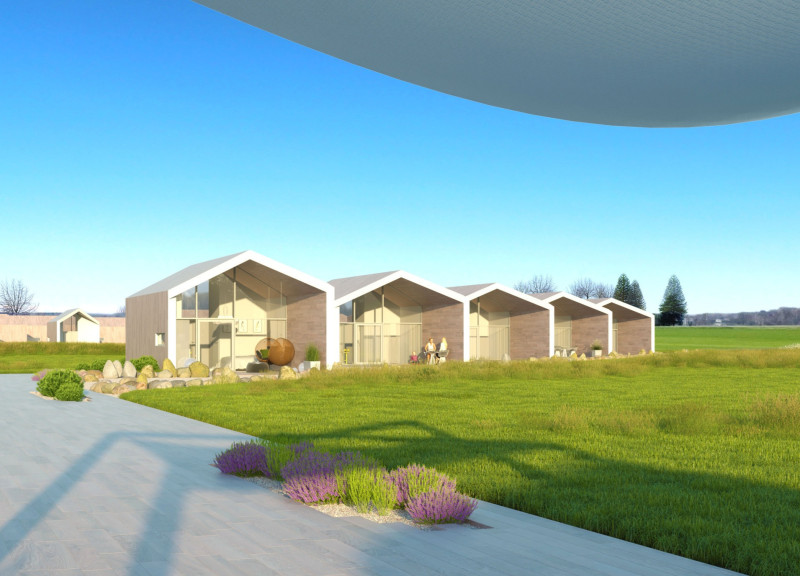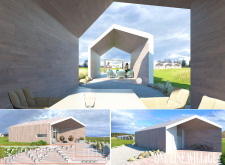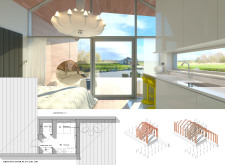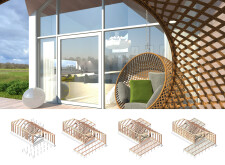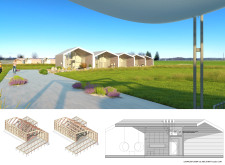5 key facts about this project
One Line Village functions as a comprehensive residential development that caters to various living arrangements. Its layout is designed to promote a sense of belonging among residents, with strategically placed communal spaces that encourage socialization. The architectural design thoughtfully arranges individual units in a manner that facilitates engagement, ensuring that while each home maintains its identity, it is also part of a larger community ecosystem.
The architectural form of One Line Village features distinct gabled rooflines that add character to the design while subtly referencing traditional home styles. This design choice not only enhances the visual appeal but also optimizes the roof for water drainage and natural ventilation. The use of large glass panels throughout the facade invites ample natural light into living spaces, establishing a strong visual connection between indoor environments and the surrounding landscape. This emphasis on transparency allows for a harmonious integration with nature, inviting residents to feel more connected to their environment.
Materials play a crucial role in the overall design and functionality of One Line Village. The extensive use of sustainably sourced wood for both cladding and roofing lends a warm, organic feel to the structures, promoting a sense of comfort. The durability and structural integrity provided by concrete elements ensure that the units will stand the test of time, while strategically placed metal features, such as railings and brackets, add a modern twist to the overall aesthetic.
In addition to its physical attributes, the project incorporates innovative design elements that enhance the living experience. Outdoor spaces are designed to be extensions of the indoor areas, featuring integrated seating arrangements and shaded areas that invite residents to enjoy the surrounding environment. Common spaces, such as gardens and gathering areas, are thoughtfully incorporated into the layout to create opportunities for social interaction and community building.
One Line Village is unique not only for its architectural aesthetics but also for its sustainable approach. The design prioritizes energy efficiency through passive solar strategies, utilizing the orientation of windows and rooflines to reduce energy consumption. The landscaping is another crucial aspect, featuring native plant species that support local biodiversity while creating pleasant, low-maintenance outdoor environments.
Overall, One Line Village exemplifies the evolving nature of residential architecture by addressing both the functional needs of its occupants and the broader environmental context. Its ability to create a cohesive community atmosphere while celebrating individual expression represents a significant step forward in the realm of architectural design.
For those interested in exploring the intricacies of the project further, detailed architectural plans and sections provide insight into the thoughtful design decisions that have shaped One Line Village. Delve into the architectural designs and ideas that make this project a noteworthy exploration of modern living.


